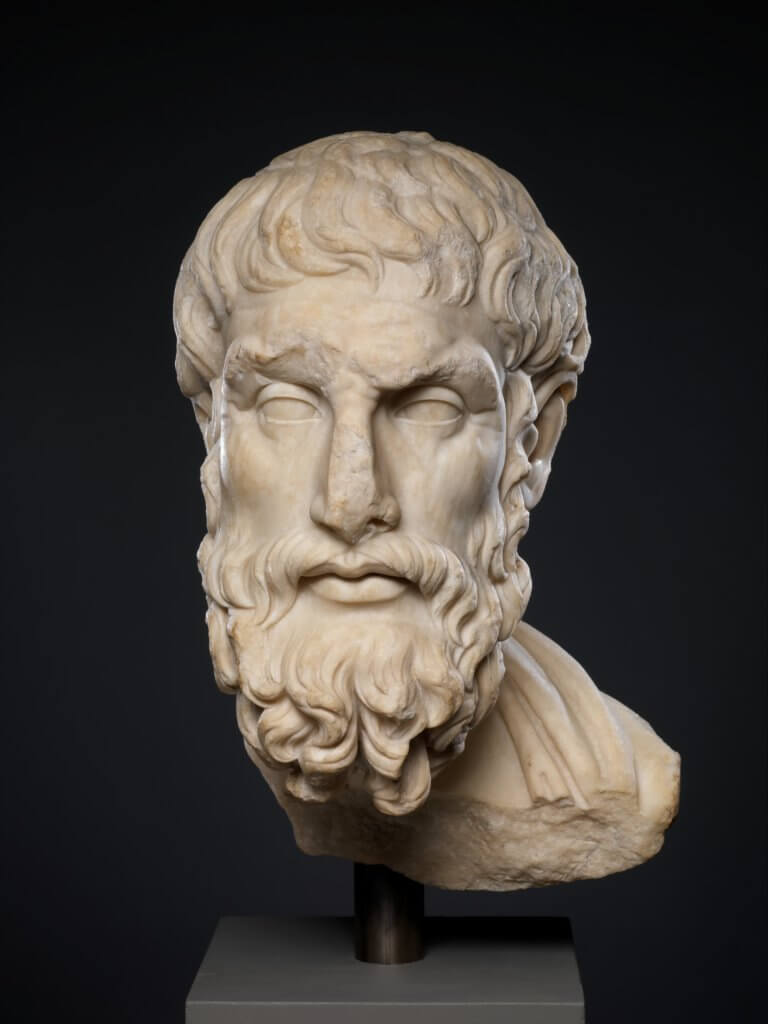Blog > Stories
Monroe as a Caesar, a Saint, a Copy, and Never a Person

Blog > Stories
Monroe as a Caesar, a Saint, a Copy, and Never a Person

Wisdom Can’t Be Bought
Warhol had been producing variations of the Marilyn portraits since the actress’ sudden death in 1962. Here we’re jumping ahead a couple of years to the Shot Sage Blue Marilyn. The Shot Marilyns are a very (very!) specific set of portraits that were literally shot, with a gun, by a friend of a friend who stopped by The Factory one day in 1964. The five in this set are very, very valuable.

These ones obviously have an extraordinary story, which always helps, but they’re also done in a specifically laborious process and at an unusual size, which increases their value and prestige. In 2022, the Shot Sage Blue Marilyn (shown here) sold at auction for $195 million.
So the value is certainly tied to rarity and notoriety, but it’s important to consider what the Marilyn portraits are doing from an art historical standpoint. And, to do that, the references are going to go way back; building a timeline from some very early examples of human ruling classes all the way through the 20th century. It’s the greatest hits of government, religion, entertainment, and advertising!
Our start is in ancient Rome and with their innovative portraiture, especially of their institutional leaders. Unlike their contemporaries, the Romans detailed and highlighted aging and individualization. But they also had a very repeated and rigid format with busts that start at the shoulders with the body turned slightly to the side. And they made tons of copies to install in important buildings throughout the Roman empire.




Historian Jeremy Tanner puts a pin in it, saying that the act of honorific portraiture was “a strategy for constructing and maintaining new relationships of power and solidarity between rulers and ruled.” [emphasis ours] These Roman portraits showed, clearly, who was in charge, and the impossible trait that was needed for power in their society – age.
(Roman portraiture) “…. was a strategy for constructing and maintaining new relationships of power and solidarity between the rulers and ruled.” [emphasis ours]
Jeremy Tanner
The aged details in the subject alluded to the superiority and quantity of their experience – an attribute that money can’t buy, wasn’t available to the general population (whose life expectancy averaged 22-33 years old), and made it possible for someone to have a place in power. These rulers had life experience; something the average citizen obviously couldn’t understand and was allocated, (like beauty and fame) through a mix of genetics, survivable living conditions, lucky partentage, and social whims.











